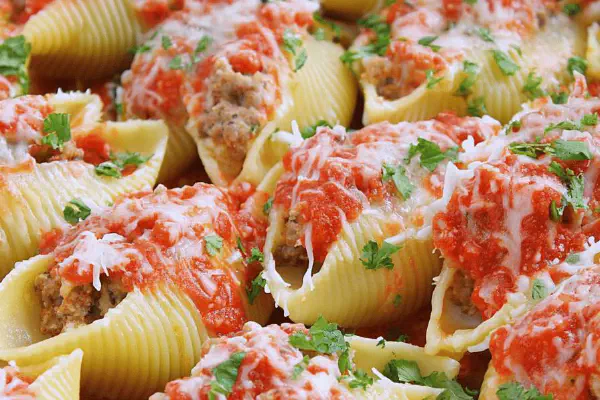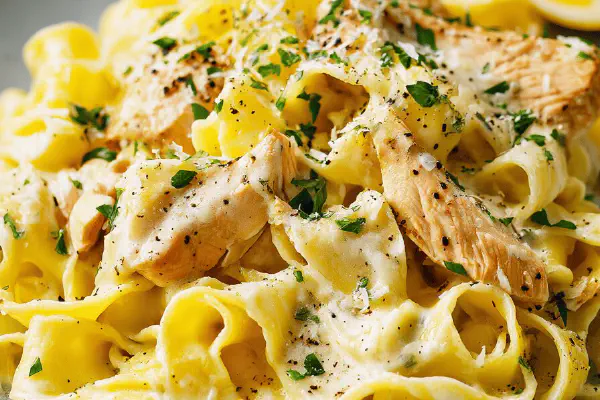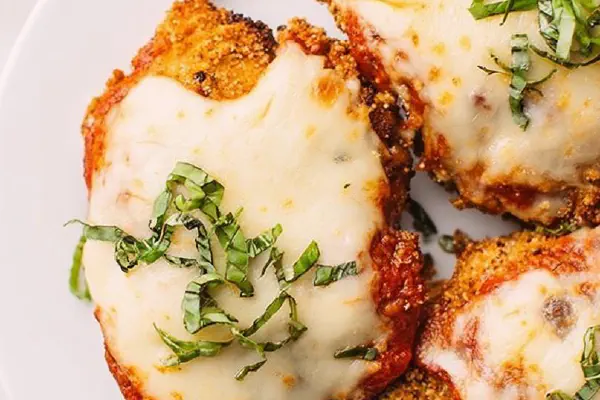Featured Recipe
Blistered Tomato Chicken Caprese

By Kate
"
Chicken, pasta, cherry tomatoes blistered in a pan till skins crack. Toss rotini, fresh basil, mozzarella balls to finish. Quick skillet method with balsamic punch and olive oil. Juices released under gentle spoon pressure build sauce. Covered lid melts cheese gently over heat. Useful swaps for rotini and mozzarella. Visual cues for blister and slight sizzle, plus aroma of sweet caramelized tomato and basil freshness. Ready pasta cuts down prep time. Nearly 15 minutes cook time, easy weeknight fix. Four servings with balanced protein and carbs.
"
Prep:
6 min
Cook:
9 min
Total:
15 min
Serves:
4 servings
pasta
chicken
dinner
easy
Italian
Introduction
Heat builds, the pan crackles. Cherry tomatoes take center stage first — you want that skin broken, blistered, releasing sweet juices, not just cooked soft. Then toss in pasta and shredded chicken, warmed through but not overdone. Fresh basil tears bring brightness when tossed last, with mozzarella balls melting gently beneath a lid to keep creaminess intact without turning stringy. Balsamic glaze pulls everything together — sweet, tangy, sticky. The smell of caramelizing tomatoes with basil hits before the first bite. Quick to assemble with ready pasta. A dinner to get the balance right between quickness and flavor complexity.
Ingredients
About the ingredients
Cherry tomatoes blister beautifully when heated dry first in the pan—this brings out sweetness without sogginess. Using aged balsamic glaze adds thick sweetness and shine, easier to drizzle than straight balsamic vinegar, which can be thin and watery. Rotini is traditional but fusilli or penne are fine substitutes, holding sauce and juices well. Swap shredded rotisserie chicken with turkey for a leaner option or leftover pulled pork for a twist. Mini mozzarella balls are classic but burrata can add creaminess while feta adds sharpness. Olive oil quality is key—extra virgin for flavor depth. Salt carefully to enhance tomato juices without drying pasta. Optional chili flakes for a kick.
Method
Technique Tips
Start the tomatoes in a dry, hot nonstick pan to promote blistering without excess sweating or steaming. Patience matters—wait for visible skin cracking and popping sounds before adding oil. The splash and sizzle when adding olive oil and balsamic is normal; stir gently to keep juice and glaze together. Pressing tomatoes releases natural juices, forming a slick, flavorful pan sauce to cling to pasta and chicken. Toss cooked pasta and protein last to avoid mushiness, warming just enough. Adding cheese last and covering briefly is a technique to soften without melting away structure or creating stringy cheese. Drizzle balsamic at the end to preserve glaze’s texture and flavor contrast. Garnish fresh basil off heat for brightness and aroma punch. If tomatoes don’t blister quickly, increase heat slightly but watch carefully to avoid burning.
Chef's Notes
- 💡 Start dry in pan; hear the sizzle. Tomatoes pop; skins blister; don't rush this. Medium-high heat first, then medium low when adding oil.
- 💡 Patience with tomatoes, wait for popping sounds. When they crack, release sweetness. Then add oil and balsamic. Watch for splatter.
- 💡 Toss cooked pasta in, but not too long. Just enough to warm through. Warm chicken also; don't overdo. Keep textures distinct.
- 💡 Cover with lid once mozzarella is on top. Let it soften a minute or two. Not full melt. Just a gentle heat, keeping shape.
- 💡 Garnish with fresh basil at the end. Adds aroma. Extra drizzle of balsamic helps. Visual cues, aroma crucial for finishing strong.
Kitchen Wisdom
What if tomatoes won't blister?
Increase heat slightly; wait for popping sounds. Watch closely to avoid burning skin.
Can I substitute chicken?
Yes, use turkey. Or leftover pork. Aim for shredded; keep it moist and in bite-sized pieces.
How to store leftovers?
Keep in fridge; airtight container. Use within 2-3 days. Reheat on low heat, to avoid tough chicken.
What if I don’t have fusilli pasta?
Use rotini or penne instead. Both hold sauce well; maintain texture in the dish.



